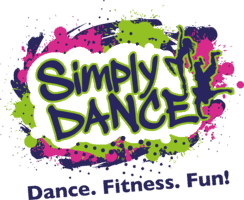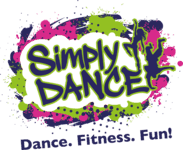Part of safeguarding and promoting welfare. This refers to the activity that is undertaken to protect specific children who are suffering, or are likely to suffer, significant harm.
Additional Guidance A: Reporting Suspected Neglect or Abuse.
A smaller school with only one or two members of staff will contact an appropriate external agency to report suspected abuse or neglect. Larger schools will nominate a member of staff who will make the decision about what to do next. Please note: failure to report suspected abuse can itself be considered to be abuse. Concerns regarding a child’s welfare can be reported by: • Parents • Teachers • Friends • The child or young person. All allegations of neglect or abuse will be taken seriously. If a concern is reported directly by the child or young person we will not seek to disagree, ask probing or leading questions, or do anything else which may discourage them.
We will make it clear that reported concerns cannot be kept confidential but will need to be shared with a nominated member of staff or external organisation. Parents or guardians will also be involved if appropriate. It can be helpful to write down what is being reported to you. Make sure you do not add your own assumptions, opinions or judgements. We recognise that early action is vital. Any concerns will be reported immediately. If the child or young person is in immediate danger of harm, we will contact the police on (999) In all other cases, we will report concerns to the local Protection Team (NCSP).
Additional Guidance B: Appropriate Physical Contact in Dance.
Physical contact in a dance class is sometimes required to correct the posture or position of a student. Teaching dance is a physical activity and a teacher will sometimes need to make physical contact with a student to show an idea or to correct the student’s position. This can include: • Lifting • Adjusting arms, legs, rib cage, hips, feet, hands • Moving one student in relation to another.
Where contact is needed, we will remain sensitive to the student’s wishes and put their welfare first. In all cases, we will say why and how we will be correcting the student’s position before making any contact. We encourage students to report any concerns.
Additional Guidance C: Chaperoning Children to and from Dance Events.
UK law does not state how many adults are required to look after a group of students. Therefore, it is up to the dance teacher to assess what is needed. Take account of: • The length and type of journey • The age of the students • Anything else that may affect their safety. In the UK some events require young performers to hold a Child Performance Licence and that any Licenced child has a designated chaperone who is pre-approved by the child’s local council. More information about this scheme can be found on the UK Government website. Laws will be different in non-UK countries, so please check local regulations.
When chaperoning students to an event, we will: • Provide parents and students with information about what the event is for • Provide parents and students with the full address of the event • In cases where the event is taking place in a large building, we will also give the room or studio number where possible • Have a planned journey route that is shared with parents, students and chaperones • Make sure that students are aware of what they should do if they get lost • Ask parents and students for their contact details in case of emergency • Have a clear idea of how students will be cared for while at the event We will ensure that chaperones hold all required checks and licences and are aware of our Child Protection Policy. If a child is missing and all efforts to find them have failed, then it is advisable to call the police. Immediate action can make all the difference.
Additional Guidance D: Use of Photographs and Film of Children.
It is common for teachers, parents and students to take images (in the form of photographs and film) at classes and events. However, there may be times when it is not appropriate for images to be taken. These can include: • While students are getting changed or are in their designated changing rooms • Where the image may be shared publicly on social media • When students are in large groups and permission has not been sought from all those included in the image It is therefore important for your school to have a policy that clearly states when images can be taken. The UK Government has provided advice on their website regarding safety when sharing photographs and film on social media. Other countries will have similar guidance.
We recognise that taking images of students in our care may not always be appropriate and that some children and parents may not want images taken at any time. Therefore, before taking images of a child or young person, we will: • Make clear to the child and parent where and when the image will be taken • Clearly identify the person who will be taking the image.
Explain how the image will be used, e.g. whether it will be posted on social media or printed to be displayed at the school • Seek written/electronic agreement from parents that images can be taken of their child. (This can take the form of a signed document that you keep on file) Where we have publicly displayed images at our school or on social media, parents and students may withdraw their permission at any time. In such cases, the images will be removed as soon as is reasonable and without question. We ask that any parent wanting to take photographs or film at our events only do so with our prior permission. Permission will only be granted on the agreement of all present.
Health & Safety Policy.
We will actively maintain and promote good health and safety procedures and will: • Maintain safe and healthy work conditions • Provide adequate control of the health and safety risks at our school • Be open to comments and suggestions from our employees, students and their parents on matters relating to health and safety • Provide information, instruction and supervision for employees and students and make them aware of this policy • Ensure all employees are capable of doing their tasks, hold any required qualifications, and that they receive adequate training • Record any harm or injuries that occur in an Accident Book and make changes where required to avoid similar incidents in the future •Regularly review and update this policy
(Charlotte Stripling) has overall responsibility for health and safety. (Charlotte Stripling ) have day-to-day responsibility for ensuring this policy is put into practice. A Health & Safety Law poster is displayed (On the wall in reception) – this is a requirement under UK law for anyone who employs others. A First Aid box is located in (In reception and in the Tree house studio). An Accident Book is located in (Reception first aid box). In the case of an emergency or serious injury, please contact the emergency services on (999).
Continued Professional Development.
Continuing Professional Development (CPD) and the ISTD or the IDTA Professional Standards Scheme CPD is the means by which a teacher keeps their knowledge up-to-date and refreshed throughout their career. As part of our new Professional Standards Scheme, the ISTD encourages all Members to attend a minimum of 18 hours (three days) of CPD events per year. Members who fulfil this element of the scheme will receive a publicly displayed badge on their new look dance-teachers.org profile.
Taking part in CPD activities is vital for any teacher who wants to ensure that they continue to offer their students the best training possible. CPD can further your teaching practice through • Learning new teaching methods, approaches and concepts • Keeping abreast of developments in the dance profession Regular CPD attendance will demonstrate to students and their parents that you are committed to maintaining the highest standard of dance teaching.
In order to achieve the CPD element of our Professional Standards Scheme, you will need to attend a minimum of 18 hours (or three days) of dance-related activities. These can include: • ISTD courses and congresses • Courses by other dance, arts and education organisations (providing these have clearly stated learning outcomes) •Teacher training qualifications • Further or higher education courses • Participation in regular dance classes or training • Attendance at ISTD awards
Attendance at professional performances and competitions • Mentoring or coaching.

